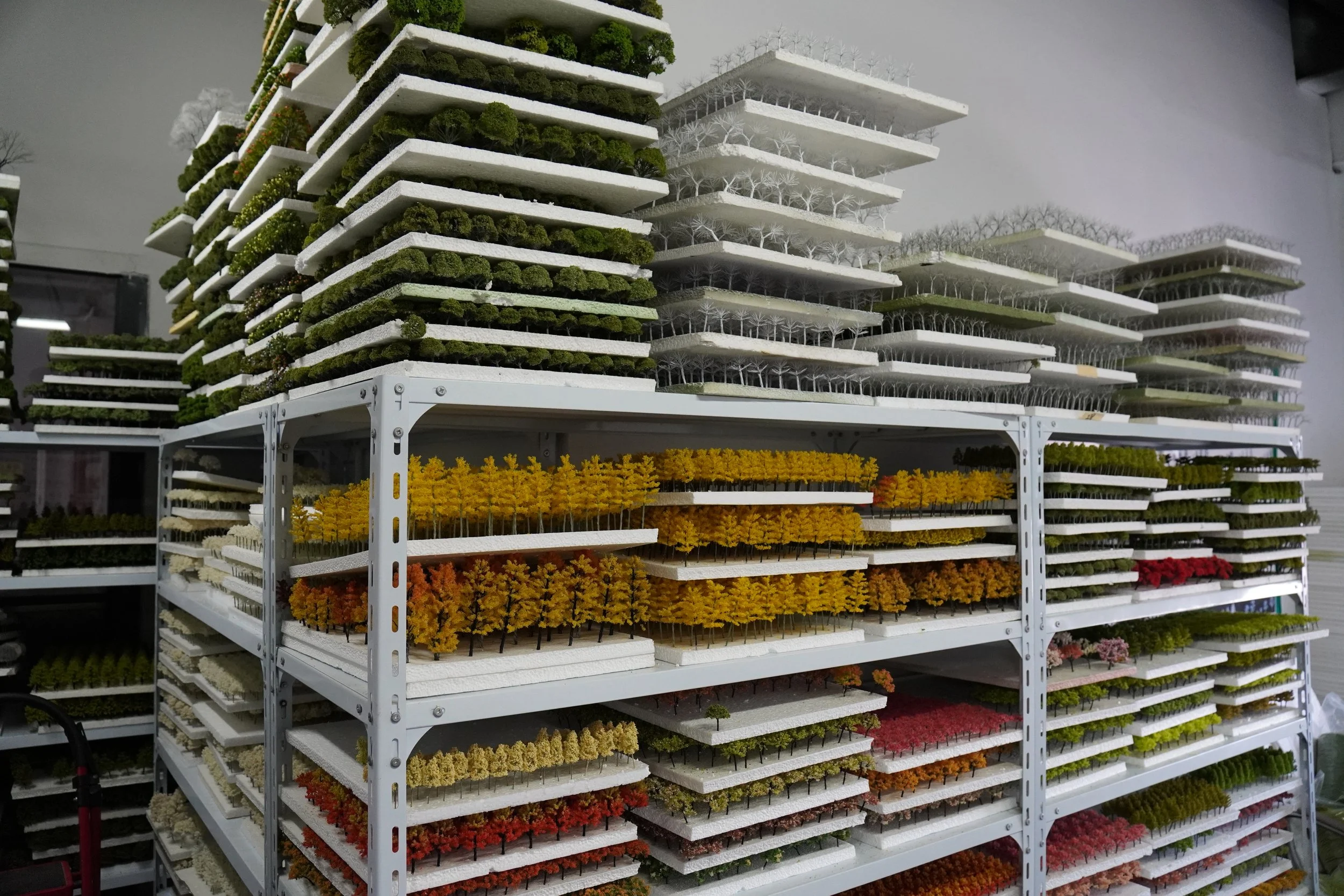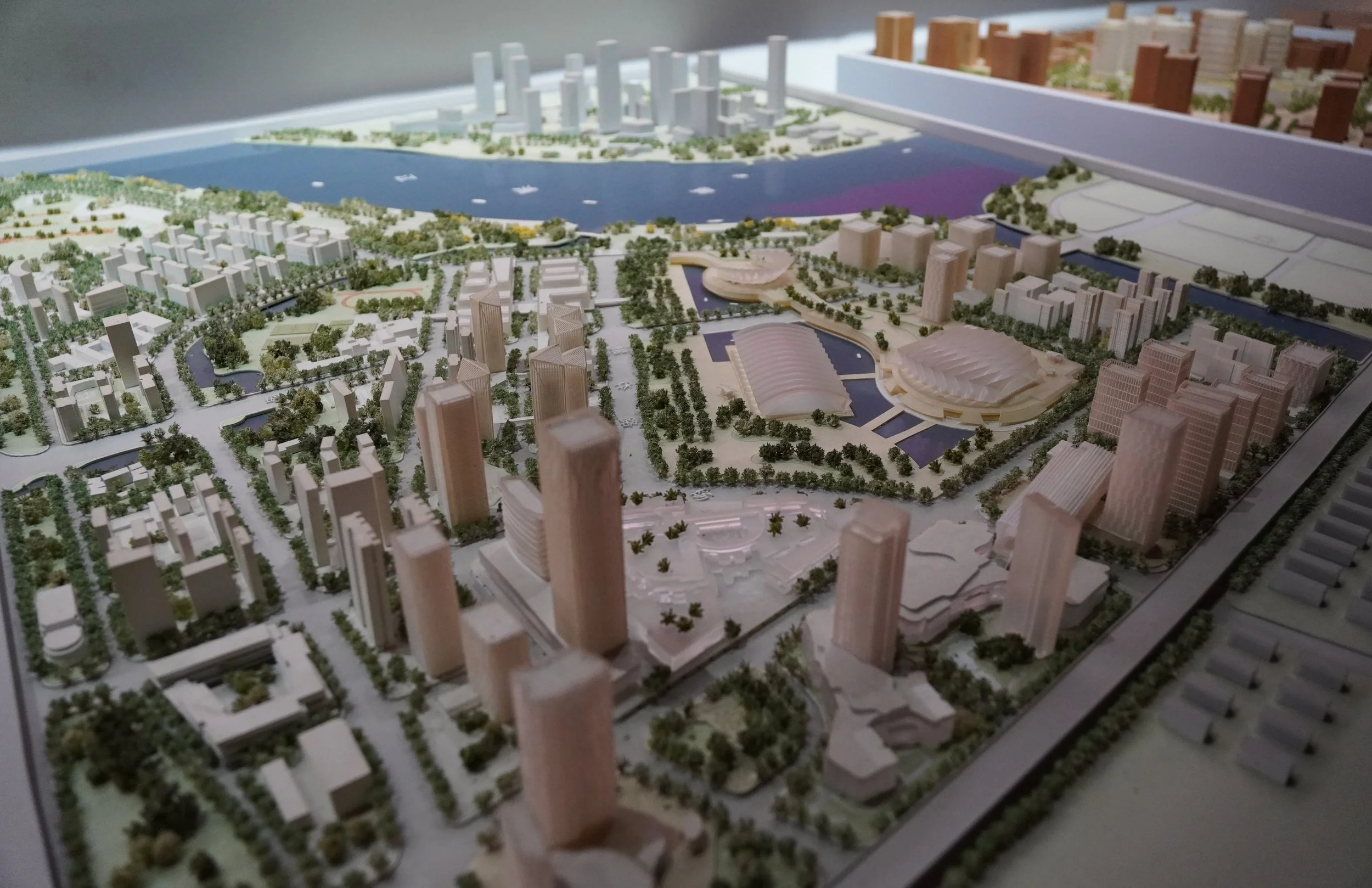How Much Do Architectural Scale Models Cost in US? (Quick Guide)
A quick guide to understanding the cost of architectural scale models in the U.S., from small concept models to masterplans and presentation models.
Architectural scale models continue to be an essential tool for developers, architects, and real estate teams who need a clear, tactile representation of their projects. Pricing varies widely depending on size, detail, and purpose, but here is a straightforward breakdown you can use for budgeting.
Typical Price Ranges
These are common U.S. market ranges for 2025:
Small Concept Models
$2,000 – $8,000
Used for massing, feasibility studies, early-stage design, and small residential models.
Mid-Size Architectural Models
$4,000 – $20,000
Typical for townhomes, small commercial buildings, and site models with moderate detail.
Large Display / Presentation Models
$15,000 – $80,000+
Used in real estate sales galleries, luxury developments, and high-detail presentations.
Masterplans & Industrial Models
$30,000 – $250,000+
Covers large urban planning models, industrial facilities, shipyards, campuses, and infrastructure.
Key Factors That Affect Cost
1. Scale and Physical Size
Larger models require more materials, more components, and more fabrication time. A shift from 1:200 to 1:100 can double the cost.
2. Level of Detail
Fine façade details, furniture, landscaping, lighting, and realistic finishes increase material and labor hours.
3. Materials Used
Costs change based on whether the model is built from ABS, acrylic, resin, engineered wood, or a mix of premium components.
4. Source File Quality
Clean Revit, CAD, or SketchUp models reduce drafting and preparation work. Incomplete or 2D files usually add cost.
5. Special Features
LED lighting, interchangeable modules, transparent components, moving parts, and embedded electronics add to pricing.
6. Timeline
Rush projects use more labor overlap and extended machine hours, which increases the overall cost.
What You Should Prepare Before Requesting a Quote
Providing these items ensures accurate pricing:
Dimensioned site plan
3D model (Revit, Rhino, SketchUp, DWG, FBX)
Desired scale (e.g., 1:50, 1:100, 1:200)
Expected level of detail
Purpose of the model (presentation, design review, masterplan, etc.)
Delivery location
Why Cost Varies So Much
Architectural models are custom-built physical products. They combine 3D printing, CNC machining, hand assembly, painting, and finishing.
Because every project is unique in complexity and intent, the pricing can only be estimated once the design information is reviewed.
How Long Does It Take to Build an Architectural Scale Model?
A clear breakdown of how long different types of architectural scale models take to build, including concept models, presentation models, masterplans, and interior models—plus what factors affect the timeline.
Architectural scale models are powerful tools for communication and storytelling — but they also require time, planning, and precision to build. Whether you're preparing for a real estate launch, a board presentation, or a design competition, knowing the right timeline helps you budget, schedule approvals, and avoid last-minute stress.
This guide breaks down the production timelines for different types of architectural models and what factors influence lead time.
1. Typical Production Timelines by Model Type
Concept Models
Timeline: 5–10 days
Concept models focus on form, massing, and proportion. They require limited detailing and are produced quickly for early-stage design discussions.
Factors affecting speed:
Level of simplification
Whether the design is final or iterative
Single vs. multiple massing options
Presentation Models
Timeline: 15–30 days
These models are detailed, realistic, and often include color, textures, lighting, and landscaping. They require coordinated production across multiple fabrication steps.
Common workflows:
3D printing or CNC fabrication
Laser-cut façade patterns
Hand finishing and painting
Interior or LED lighting integration
Masterplan Models
Timeline: 20–45 days
Masterplan models cover large development areas and often include multiple buildings, streetscapes, and landscaping. The timeline varies based on the complexity and level of detail.
Timeline variables:
Number of buildings
Hero building vs. simplified surroundings
Custom base, acrylic case, or lighting system
Transportation and installation requirements
Interior Detail / Cutaway Models
Timeline: 10–20 days
Interior or sectional models show room layouts, finishes, furniture, or internal building systems. They are often used for hospitality brands, luxury residential, or technical presentations.
Key drivers:
Level of joinery and furniture detail
Custom finishes
Accuracy of interior drawings
Façade Mock-Ups / Material Study Models
Timeline: 7–14 days
These are partial models at larger scales designed to show depth, shadow, materials, and modular components.
2. What Affects the Model Timeline?
1. Complexity & Level of Detail
More detailed models require additional fabrication, painting, assembly, and QC.
2. Scale of the Model
Smaller scale = more buildings → longer project.
Larger scale = more detail → longer project.
3. Quality of the 3D Files Provided
Good CAD or BIM files = faster production.
Poor or incomplete files = long preparation phase.
4. Custom Materials or Lighting
LED programming, acrylic casing, or custom textures extend timelines.
5. Shipping & Display Requirements
Wood crates
Flight cases
On-site installation
3. How to Avoid Delays
Provide complete drawings early
Including: plans, elevations, sections, and 3D models.
Confirm materials and colors upfront
Minimizes rework and back-and-forth approvals.
Plan for shipping time
Especially for out-of-state or international deliveries.
Start early if the model is for a competition or event
Deadlines compress quickly — earlier is always better.
4. Typical Workflow Timeline (Example for a 25-Day Presentation Model)
Day 1–3: File preparation, scaling, planning
Day 4–10: Fabrication (3D printing, CNC, laser cutting)
Day 11–18: Painting, detailing, assembly
Day 19–22: Lighting installation and base work
Day 23–24: Quality control and photo review
Day 25: Packing and shipping
Final Thoughts
Understanding the timeline of architectural model production helps developers, architects, and designers plan ahead and avoid unnecessary rush fees. Whether you need a fast concept study or a highly detailed presentation model, early coordination ensures the best results.
If you’re preparing for an event or have a tight schedule, Carve Model can provide a timeline estimate within hours based on your drawings and requirements.
How to Choose the Right Scale for an Architectural Model
Choosing the right scale for an architectural model depends on the real dimensions of the object, the level of detail required, and how the model will be used. This guide explains common scales, how to convert real-life dimensions into model size, and how to select the right scale for any project.
Choosing the right scale for an architectural model depends on the model’s purpose, level of detail, and the actual dimensions of the real object. Scale suggestions are general rules of thumb — every project requires its own evaluation.
Always Start With the Real Dimensions
Before selecting a scale, calculate how big the model will be:
Real height
Real footprint
Longest edges
Available display or shipping space
A model that becomes unusually tall or tiny is a sign the scale needs adjusting.
General Rule-of-Thumb Scales
(Actual dimensions always override these guidelines)
1:50 – Interiors, units, hotel rooms
1:100 – Building architecture
1:200 – Mixed-use blocks, TODs
1:500 – Masterplans, large sites
1:1000 – City-scale overview
How to Convert Real Dimensions Into Model Size
Formula:
Model Size = Real Size ÷ Scale
Example 1 — in Imperial Unit
Real object: 420-ft tower
Scale: 1:200
Model height:
420 ÷ 200 = 2.1 ft ≈ 25.2 inches
Example 2 — in Metric Unit
Real object: 120-meter building
Scale: 1:500
Model height:
120 ÷ 500 = 0.24 m = 24 cm
How to Choose the Right Scale
Ask yourself:
What are the actual dimensions of the building or site?
How big will the model be after scaling?
Does it fit your table, gallery platform, or crate?
What detail do you need to show?
Who is the audience?
The right scale ensures clarity, practicality, and visual impact.
Carve Model — Bringing Your Vision to Life with Precision and Craftsmanship.
Types of Architectural Scale Models: A Complete Guide for Developers & Designers
A quick guide to the most common types of architectural scale models—from concept and presentation models to masterplans and interior detail models—and how to choose the right one for your project.
Architectural scale models remain one of the most effective tools for communicating design ideas, presenting to clients, and supporting real estate sales. Whether you’re developing a masterplan, refining a building façade, or preparing for a presentation, choosing the right type of model matters — and affects cost, timeline, and impact.
In this guide, we break down the most common types of architectural scale models, their ideal use cases, and how to choose the right one for your project.
1. Concept Models
Best for: Early design, quick visualization, massing studies
Concept models are typically simplified physical representations used in the early stages of design. These models focus on the form, massing, proportion, and spatial relationships without detailed façade elements.
Key Characteristics
Fast production
Lower cost
Minimal detail
Often monotone (white, grey, or wood tone)
Scales: 1:200, 1:300, or 1:500
Ideal For:
Developers or architects who need a fast, physical study model to validate ideas.
2. Presentation Models
Best for: Final approval, design competitions, board presentations
These are highly detailed models with refined façade textures, color treatments, glazing, landscaping, lighting, and sometimes an integrated acrylic case.
Key Characteristics
High detail
Custom materials and textures
Often includes LED lighting
Scales: 1:50, 1:75, 1:100
Ideal For:
Sales presentations, architecture competitions, investment pitches, and marketing.
3. Masterplan Models
Best for: Large-scale developments, urban design, sales galleries
Masterplan models show multiple buildings, streets, public spaces, and landscaping within one development or district. These models emphasize clarity, lighting, and viewer-friendly layout.
Key Characteristics
Large physical footprint
Varying levels of detail (hero building vs surrounding massing)
Often includes programmable LED lighting
Scales: 1:400, 1:500, 1:1000
Ideal For:
Real estate developers preparing sales galleries, city planning presentations, and large mixed-use projects.
4. Interior Detail Models
Best for: Showing interior programs, hotel rooms, retail concepts, luxury units
These showcase the interior layout, joinery, finishes, and furniture.
Key Characteristics
Often removable top or sectional cutaway
Realistic interior materials
Furniture included
Scales: 1:20, 1:25, 1:30
Ideal For:
Hospitality brands, retail rollouts, and high-end residential sales.
5. Sectional / Cutaway Models
Best for: Explaining building systems or complex interior layouts
These models slice through the building to reveal mechanical routes, room layouts, staircases, atriums, or structural systems.
Key Characteristics
Detailed internal components
Helps viewers understand complexity
Great for engineering presentations
Scales: 1:50, 1:100
Ideal For:
Complex structures like hospitals, stadiums, theaters, and public buildings.
6. Product or Façade Mock-Up Models
Best for: Showing façade materials, curtainwall systems, or modular components
Façade mock-ups replicate a portion of the building envelope at a larger scale.
Key Characteristics
Very high fidelity
Shows materials, depth, shadow lines
Scales: 1:5, 1:10, 1:20
Ideal For:
Client approval, QC inspection, and modular or prefab systems.
How to Choose the Right Model
When deciding which type of model you need, consider:
1. Goal of the presentation
Investor meeting? Competition? Sales gallery?
2. Required level of detail
Do you need realistic materials or just form and massing?
3. Space available
Large masterplan models need significant table space.
4. Timeline and budget
Higher detail = longer production = higher cost.
Final Thoughts
Architectural scale models continue to be one of the most powerful storytelling tools in the built environment. Whether you need a quick concept model or a highly detailed presentation piece, choosing the right type ensures clear communication and maximum impact.
If you’re planning a project and unsure which model type suits your needs, Carve Model can walk you through options, scales, timelines, and cost ranges.




